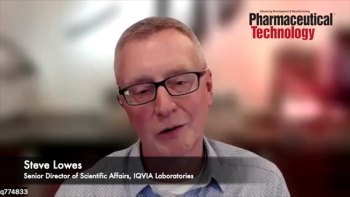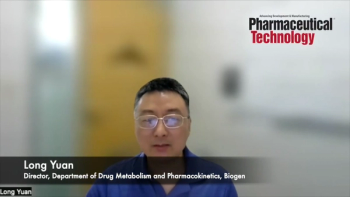
- Pharmaceutical Technology-04-02-2008
- Volume 32
- Issue 4
Vapors, Venison, and Videos
Essential components of a good inspection: good ingredients, proper inserts, and ... deer?
Acid attack
"Like many companies, we kept reserve samples of all ingredients in our products, including acids used to adjust the pH of the solutions," recalls our GMP Agent-In-Place. "The acids were stored in glass containers with a steel screw cap that had a plastic liner.
"Unfortunately, the liner didn't seal completely, and the cap rusted through after a few years. Then acid vapors slowly seeped out and attacked nearby metal, including the metal shelving. Over the years the shelving and nearby metal containers rusted together, effectively gluing the containers to the racks. When I pointed this out to management, we had to clean up the mess, have the racks repainted, and change the SOP to omit taking reserve samples of such materials in the future."
Inspection called on account of hunting
"During our GMP inspections, our staff was trained not to talk about work while we were waiting for documents," says our GMP Agent-in-Place. "So the head of the department started talking about hunting. He noted that he had wanted to take that afternoon off to go hunting, but wondered whether the FDA would be completed by then. Our department head went on to explain he wanted to hunt on that first hunting day of the season to have a better chance at the deer in a private hunt club he belonged to.
"As it turns out, the inspector was an avid hunter, and our department head spoke of the club in such glowing terms, that the inspector was enthusiastic about hunting there. Our department head offered to take him that afternoon as a guest, and the inspection was immediately considered complete by the inspector."
Old, new—What's the difference?
"It was a pretty simple process," notes our GMP Agent-In-Place. "We order inserts from the printer. If the text changed, we provided the new text and ordered new inserts from the printer. However, the printer, unbeknownst to us, had been storing excess copies of the inserts from previous print runs and providing them when we ordered more. In this way, they thought they would save set-up time and respond more quickly.
"But on this occasion, when the text of the insert changed, they sent the balance of the previous inventory (with the old text) and some newly printed inserts with the revised text to make up the total. This was only discovered on the packaging line! We inspected all containers to be sure each had the correct insert. Because none of these batches had been shipped, there was no recall necessary. We audited the printer and educated him on the requirements, specifying in writing that the printer could not maintain inventory for us in the future, on the hopes of a reorder."
You won't see this on You Tube
"It was a 'me too' product—there were other products with the same active ingredient," recalls our GMP Agent-In-Place. "But like it or not, we had to sell it. Frequently customers would complain that the freeze-dried product wouldn't go into solution. But that was the nature of the formulation we had, and formulations are expensive and time-consuming to change.
"Marketing demanded something be done, so we developed a best-practice technique for reconstituting the product and then videotaped it. Complaint numbers decreased, because most of the customers were repeat customers. The good news is now, years later, that difficult-to-reconstitute freeze-dried product is a stable liquid product; no reconstitution needed!"
Pharmaceutical Technology's monthly "Agent-in-Place" column distills true-life cautionary tales from the secret files of Control, a senior compliance officer. If you have a story of clueless operators, oblivious management, inopportune lapses of judgment, or Murphy's Law in action, please send it to Control at
Articles in this issue
over 17 years ago
Suppositories: The Incomplete Storyover 17 years ago
A Transformation in the Makingover 17 years ago
Inside IPEC-EUROPE: Pharmaceutical Excipients—The View from the EUover 17 years ago
Measuring Excipient-Market Growthover 17 years ago
Report From: China, May 2008over 17 years ago
Weak Link in the Pharmaceutical Supply Chainover 17 years ago
Spectrophotometric Determination of Leadover 17 years ago
Message in a Bottleover 17 years ago
Tracking the Potential of Excipientsover 17 years ago
Coming Down the Pike: Bispecific mABsNewsletter
Get the essential updates shaping the future of pharma manufacturing and compliance—subscribe today to Pharmaceutical Technology and never miss a breakthrough.





